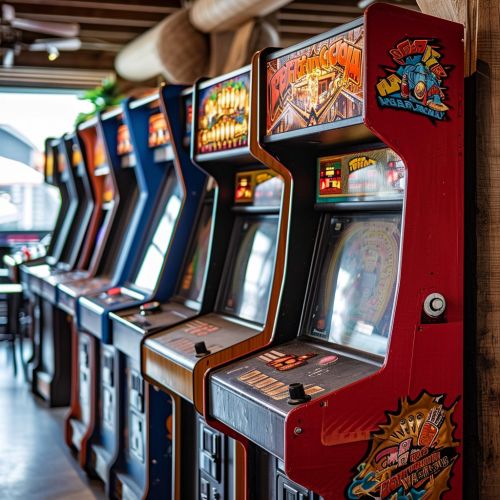Video game design
Overview
Video game design is the process of designing the content and rules of a video game in the pre-production stage and designing the gameplay, environment, storyline, and characters in the production stage. The designer of a game is very much like the director of a film; the designer is the visionary of the game and controls the artistic and technical elements of the game in fulfillment of their vision. Video game design requires artistic and technical competence as well as writing skills.
History
The history of video game design is a complex field of study that involves the examination of the major breakthroughs in technology, the cultural implications of video games, and the philosophies that drive game design. The earliest games were developed in the 1960s and 1970s, and they were based on complex systems of rules, much like board games. These early games were limited by the technology available at the time, and they were largely text-based.


Game Design Elements
Video game design involves a number of key elements that are necessary to make a game enjoyable and engaging. These elements include gameplay, mechanics, story, characters, and aesthetics.
Gameplay
Gameplay is the specific way in which players interact with a game, and in particular with video games. It is defined by the game rules, player interaction with the game, as well as the connection between player and character. The gameplay in a game is determined by the rules and the game's environment, as well as the story and the characters.
Mechanics
Game mechanics are the rules and procedures that guide the player and the game response to the player's actions. In video games mechanics consists of the rules that govern and guide the player's actions, as well as their consequences and their effect on the game world.
Story
The story in a game is the backbone of a game's narrative and the plot that the players follow. In video games, the story can be linear or non-linear and it can be told through various methods such as cutscenes, text, in-game actions, and dialogues.
Characters
Characters are the players' representation in the game world. In video games, characters can be controlled by the player or they can be non-player characters (NPCs) that the player interacts with. Characters in a game are designed with unique abilities, traits, and characteristics that align with the game's story and gameplay.
Aesthetics
Aesthetics in a game refers to its visual style and artistic direction. It includes elements such as graphics, sound effects, and music that enhance the player's experience and immersion in the game world.
Game Design Process
The process of designing a video game from concept to finished product involves several stages, each requiring a unique set of skills and methodologies.
Concept Development
The first stage of game design is concept development. This involves brainstorming and conceptualizing the idea for the game. The concept development stage is crucial in determining the direction and scope of the game.
Pre-production
In the pre-production stage, the game design team creates a detailed plan of the game. This includes developing the game's story, characters, setting, and gameplay mechanics. The pre-production stage also involves creating a game design document (GDD), which serves as a roadmap for the development of the game.
Production
The production stage is where the game is actually created. This involves programming, art and animation, sound design, and testing. The production stage is the most time-consuming and resource-intensive stage in the game design process.
Post-production
The post-production stage involves polishing the game and preparing it for release. This includes bug testing, beta testing, and marketing the game.


Game Design Disciplines
There are several disciplines within the field of game design, each with its own set of skills and responsibilities.
Level Design
Level design is the process of creating the stages or levels for a game. This involves designing the layout of the game world, creating challenges for the player, and determining the placement of items and enemies.
Narrative Design
Narrative design involves crafting the story and narrative elements of a game. This includes creating the plot, characters, dialogue, and narrative structure.
Systems Design
Systems design involves creating the rules and mechanics of the game. This includes designing the game's combat system, economy, progression system, and more.
Sound Design
Sound design is the creation of audio elements for a game. This includes creating sound effects, music, and voice acting.
Conclusion
Video game design is a multidisciplinary field that involves a wide range of skills and knowledge. From concept development to post-production, each stage of the game design process requires a unique set of skills and methodologies. With the increasing complexity and popularity of video games, the field of game design continues to evolve and expand.
